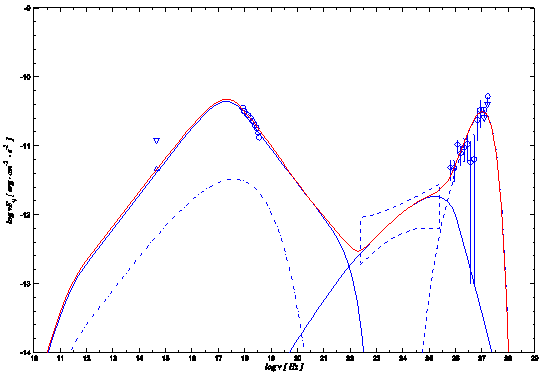Research by Gang Cao and Jiancheng Wang of Yunnan Observatories concerning the source of radiation from Gamma-Ray Blazars was recently published (2014, ApJ, 783,108).
Blazars are a subclass of AGNs, and are recognised as one of the most violent phenomena in the universe, and as such, are widely studied. It is commonly believed that a black hole lies at the center of every blazar, which emits the blazar itself by accreting material from an accretion disk and emitting a relativistic jet, which in turn emits the radio to gamma-ray radiation which comprises the blazar.
Blazars exhibit rapidly changing luminosites, highly polarized emissions, as well as double-peaked spcetra (see figure). It is commonly believed that the low-energy peak of the spectrum is due to synchrotron radiation from electrons, but the mechanism behind the high-energy peak is still heatedly debated.
The authors argue that the gamma-ray emissions of blazar 1ES 1101-232 are emitted by high-energy protons, and that the GeV emissions are a result of the self-Compton process of relativistic electrons. Fitting the observational spectra, the authors find that the total power output of the proton emissions is very high, implying that there must exist acceleration mechanisms of high efficiency in the vicinity of black holes. Since high-energy protons are a primary source of cosmic rays, the authors speculate that blazars contribute significantly to cosmic rays.
This project was funded by National Natural Science Foundation of China grants #11133006, #11163006, #11173054 and #XDB09000000.
